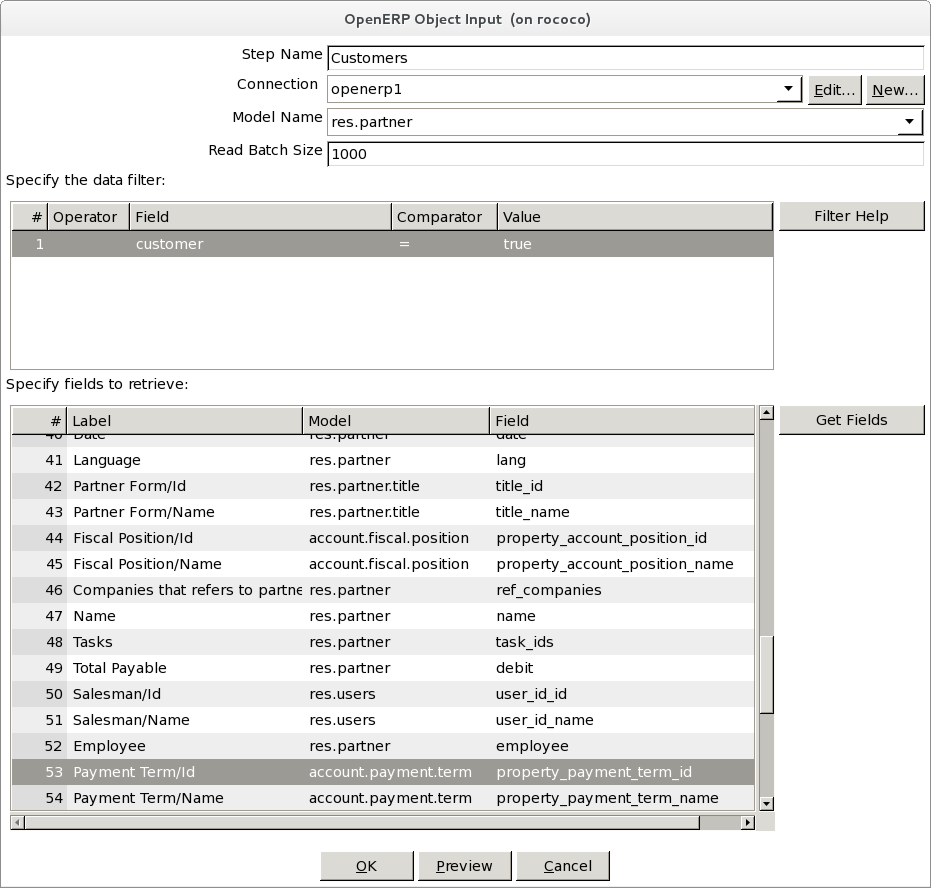OpenERP Object Input (Deprecated)
Description
This step is used to return OpenERP object data using the XMLRPC interface. It makes use of the standard OpenERP 'read' function and returns rows that satisfy the specified filter.
Since: PDI version 5.0 (PDI-6661)
Deprecated since 8.20
Options
Option | Description |
|---|---|
Step Name | Name of the step; the name has to be unique in a single transformation |
Connection | The OpenERP database connection to read data from |
Model Name | The model/object to read data from |
Read Batch Size | The maximum amount of rows to return with each call. |
Filter | Specifies search criteria. If no filter is specified, all records are returned |
Field to retrieve | List of fields to read |
Filtering data
The filtering section allows you to specify search criteria.
Option | Description |
|---|---|
Operator | Supports AND, OR, NOT. AND is the default option if no operator is specified. If you need to use OR, please read the OpenERP documentation on filtering. |
Field | Model/Object field to filter on |
Comparator | Supports =, !=, >, >=, <, <=, like, ilike, is null, is not null, in, not in, child_of, parent_left, parent_right |
Value | Constant value that will be compared to the model field |
WARNING: OpenERP filters do not work as you would expect. Hit the 'Filter Help' button to get the OpenERP description on how to do filters.
Filtering example using OR
To Filter on res.partner where the partner is either a customer OR a supplier:
Model fields
All model fields are returned by the step including related, many2many, many2one, function, selection fields etc.
Option | Description |
|---|---|
Label | Label as it would be displayed in an OpenERP client. |
Model | For many2many, one2many and many2one fields it gives an indication of the related object. |
Field | The field name on the object. Also the field name that will be used in the transformation. |
many2one fields
many2one fields return the ID and Name of the parent object. The postfix "_id" and "_name" is added to the original field name.
For example: The field country returns two fields: country_id (for the ID number) and country_name (for the country name). The same will go for salesman (user_id_id and user_id_name).
many2many and one2many fields
many2many and one2many fields are returned as a comma separated list of ID numbers.
HINT: If you need to join with many2many records, use the "Row Normaliser" step to get a row for each value of the comma separated list of IDs. The ID fields can then be joined with a stream of detail records using the "Merge Join" step.

